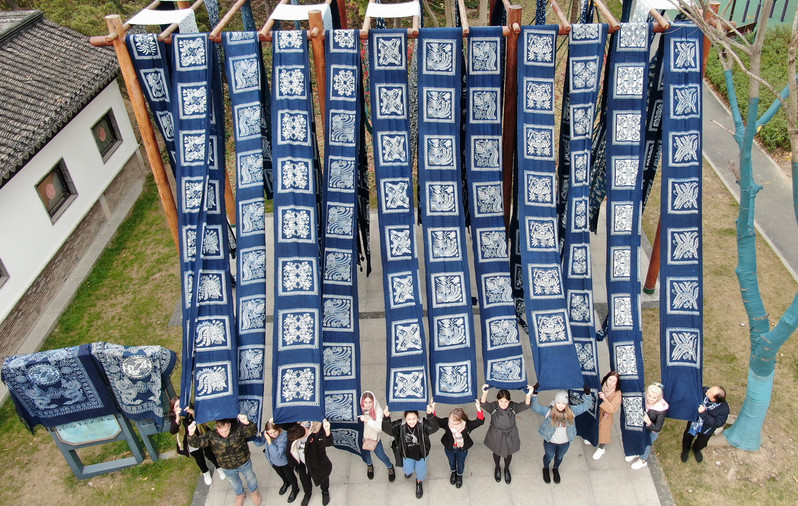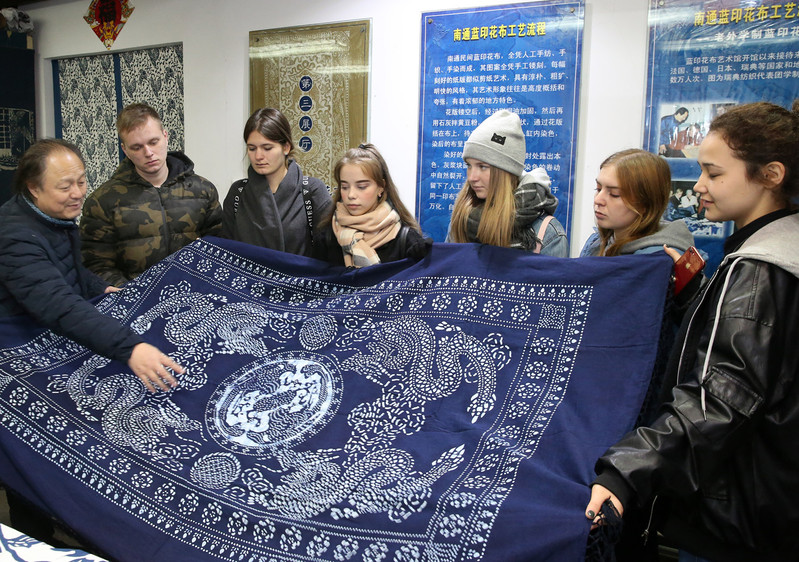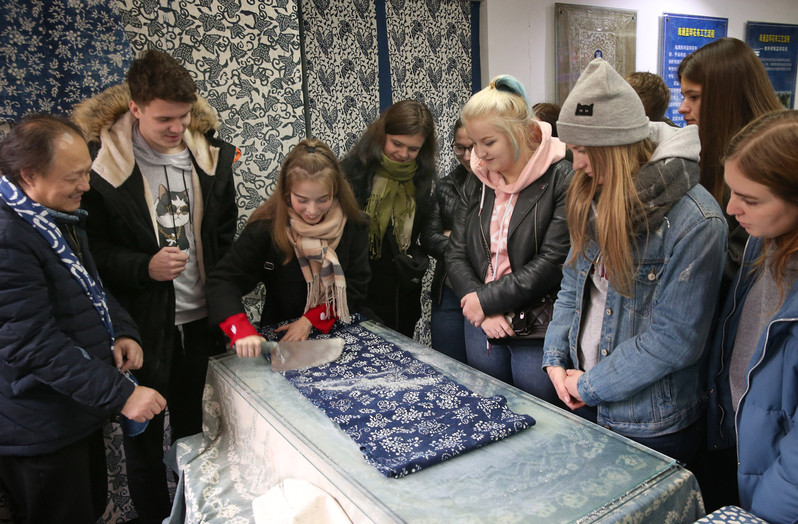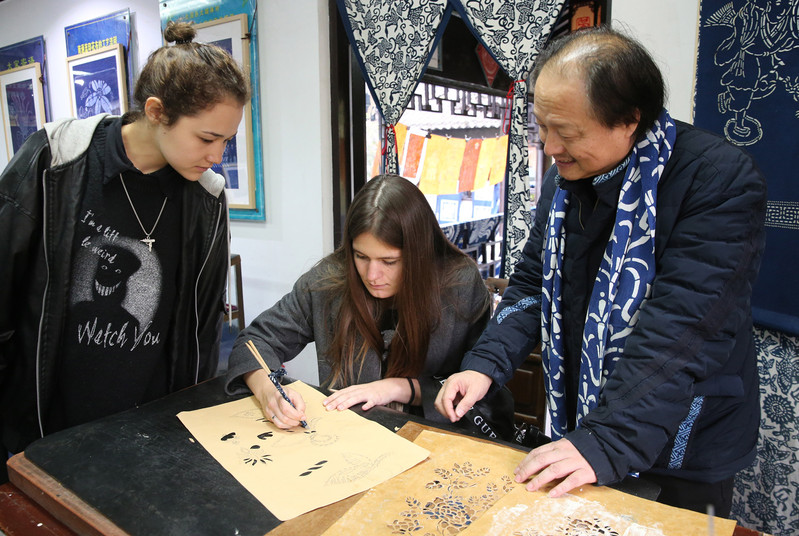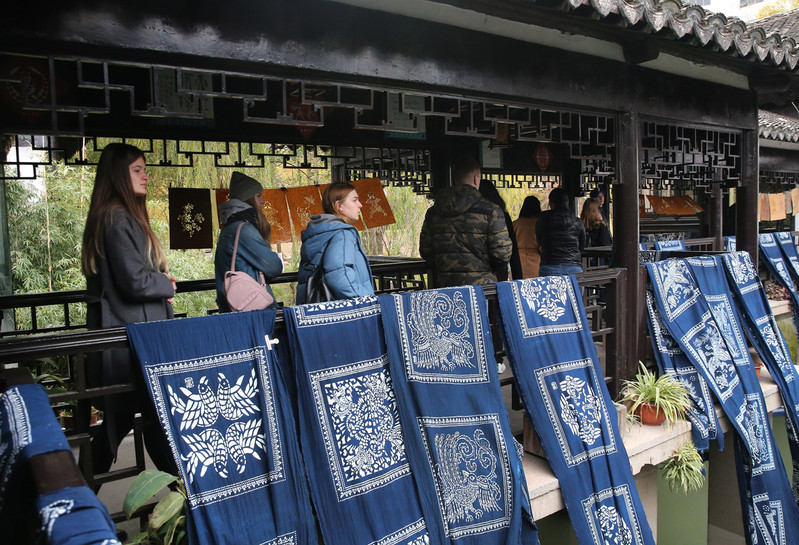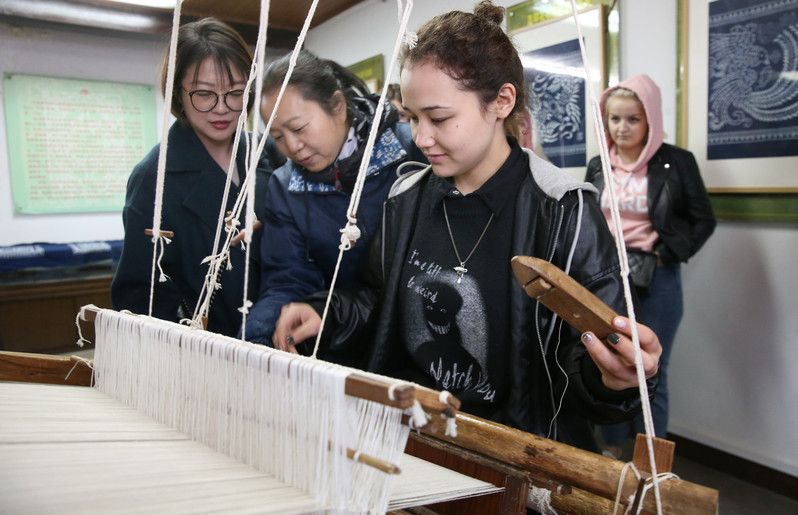Culture
Students from Russia Experienced the Charm of Intangible Cultural Heritage—Blue Calico
On December 14th, 13 Russian students from the School of Economics and Management of Nantong University came to Nantong Blue Calico Museum to learn about the printing and dyeing techniques of blue calico-- one of National Intangible heritage,to experience cotton spinning, weaving and other techniques, and they tried to make blue-dyed scarves by themselves, to get in close touch with Chinese traditional skills, and to feel the charm of intangible cultural heritage. Professor Wu Yuanxin, director of the Institute of Blue Calico Art Under Nantong University, and the first representative inheritor for national intangible cultural heritage, enthusiastically introduced the process of the production and development of blue calico to the foreign students .
Nantong blue calico is a printed and dyed textile product by traditional Chinese Han-folk handcraft, which was called “Yaoban cloth” in the Song Dynasty, while in the Ming Dynasty it was called watering cloth. A legend in Jiading (now in Jiading District, Shanghai) tells that a person with surname “Gui” invented the blue calico. Nantong was the main production origin of Chinese blue calico. Homespun cloth and natural orchid were the farmers’ common stuff, which were used by the farmers in the numerous blue calico workshops in rural towns and villages to make blue calico. Blue calico usually was used to make clothing, quilt cover, mosquito nets, pillow-cover, cloth-wrapper and so on. Blue calico were simple in pattern but elegant in design with auspicious artwork, mostly drawn from birds and animals, flowers, trees and myths and legends, such as: five blessings (bat) , Jiqing Yu (auspicious fish), lion dance with hydrangea, a carp leaping into the dragon gate, and so on. Blue calico was appraised and assessed as National Intangible Cultural Heritage in 2006.
